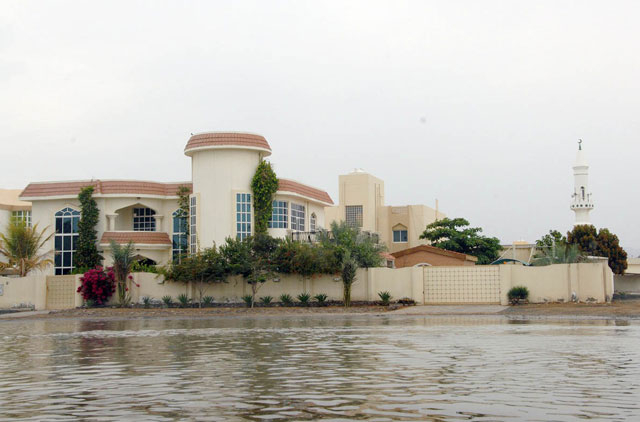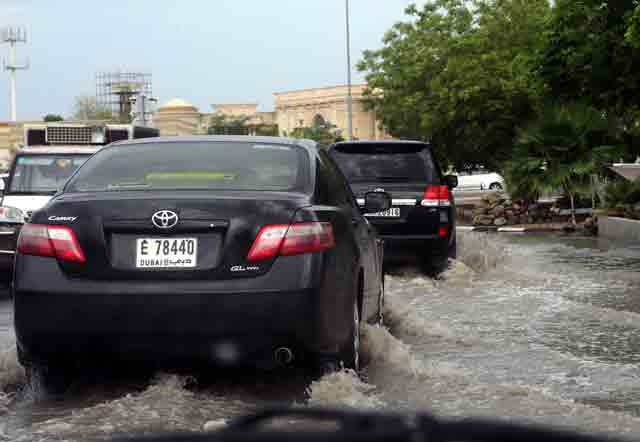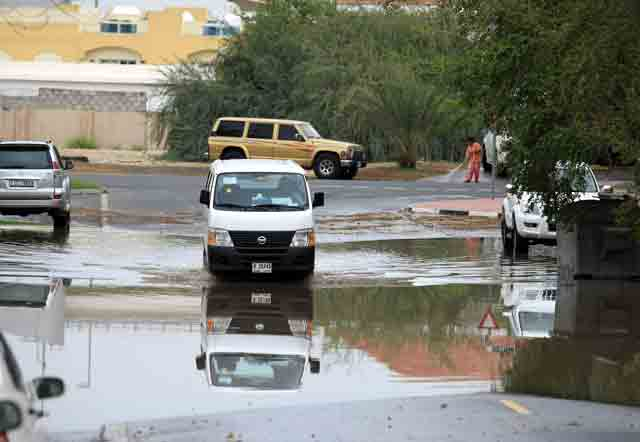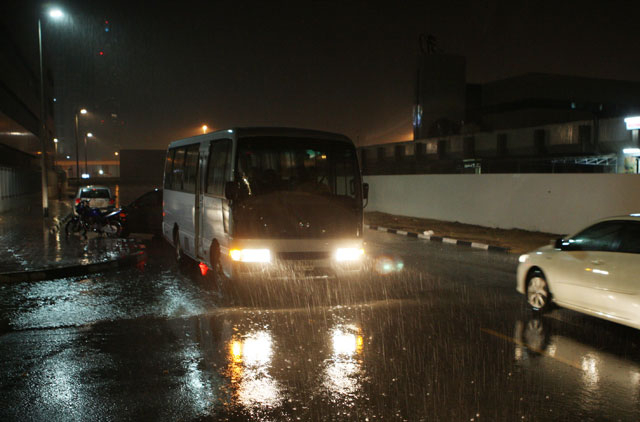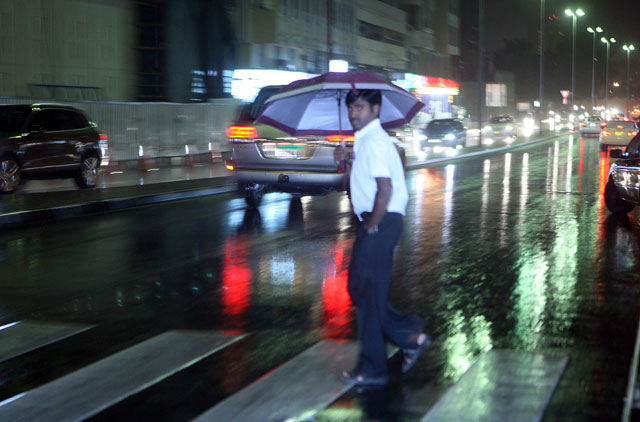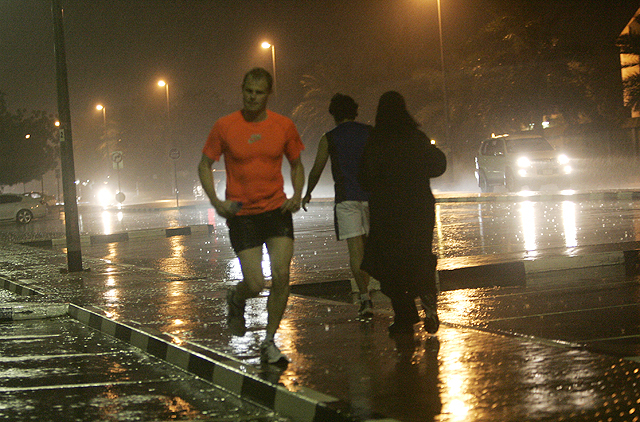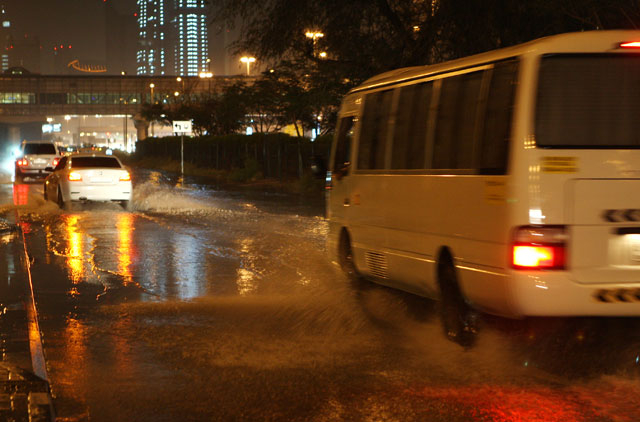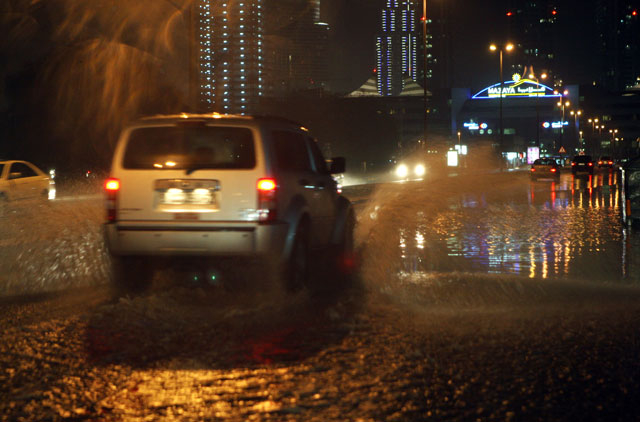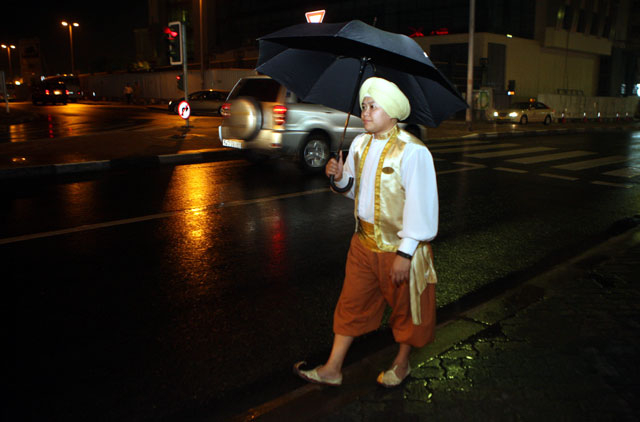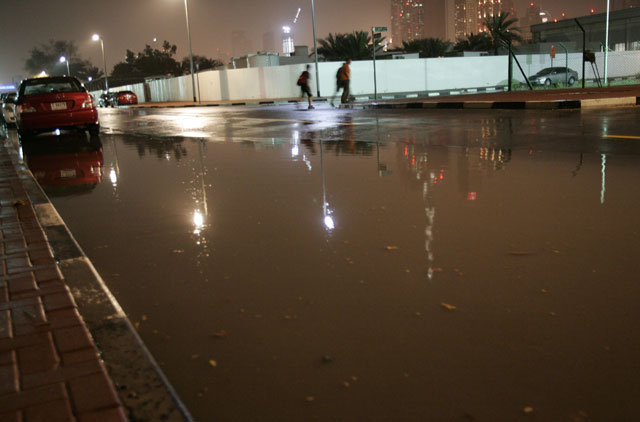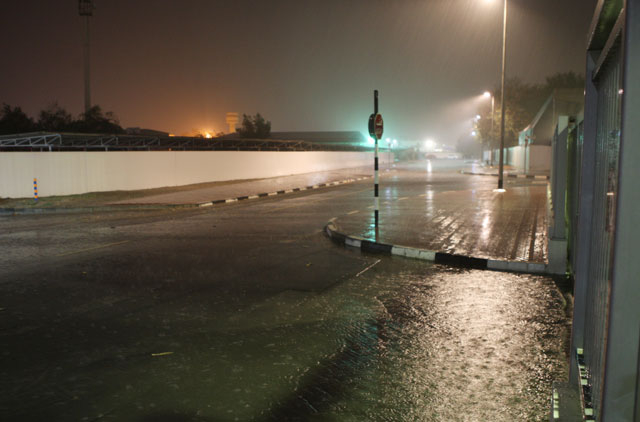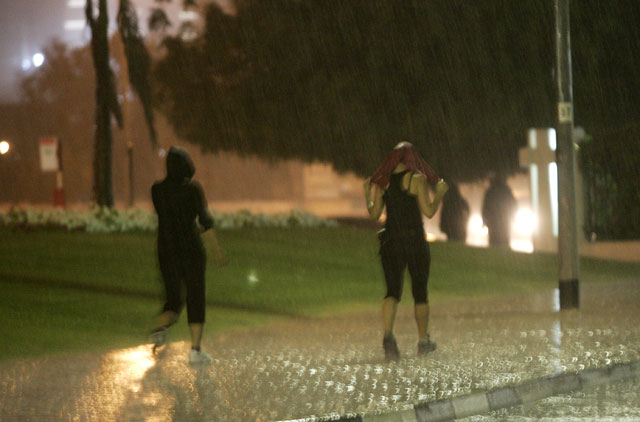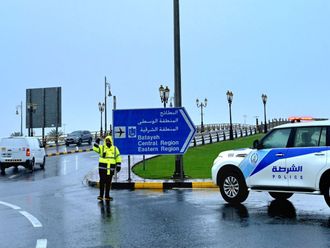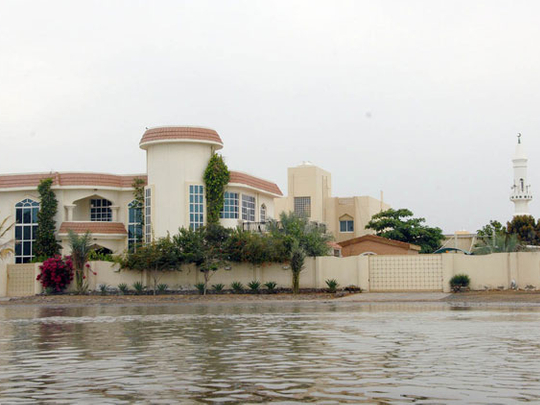
Dubai: As unstable weather conditions continue across the UAE, strong winds kicked up dust bringing visibility down in Abu Dhabi and surrounding areas on Tuesday.
"Wind speed reached up to 33 knots in western parts of the country, including in Abu Dhabi city and in areas such as Al Hamra and Al Dhafra, reducing visibility to 800 metres," a forecaster at the National Centre of Meteorology and Seismology (NCMS) said.
Read More
In pictures: Rain, wind and clouds in the UAE
How to stay safe when lightning strikes
Singing in the rain? Songs for the wet weather
Rain check for UAE's motorists
Driving etiquette: reducing the highway risk element
"The unstable weather conditions that began on Sunday will continue until Thursday. By Thursday afternoon the weather is expected to calm down, however, there are chances of light rain on Friday and Saturday as well,” he said.
Since there has been intermittent rain the chances of skidding of vehicles are especially high, the forecaster said, advising motorists to be vigilant.
On Tuesday, the weather will be cloudy with towering clouds and chances of rain over scattered areas from time to time. The weather will remain similar on Wednesday.
The UAE witnessed different intensities of rain across the country. “On Tuesday morning, the western region – including both coastal and internal areas – witnessed moderate to heavy rainfall.”
The highest rainfall was recorded in Owtaib, which received 16 mm of rain. About 7.2 mm rainfall was recorded in Ruwais.
“Now (Tuesday afternoon), the clouds are moving towards central and northern parts of the country. In addition, new clouds are forming over western region.”
The sea will be rough at times, with waves reaching up to 6 feet, NCMS warned.
From Thursday afternoon the sea will be rough as north-westerly winds will begin to accelerate over the sea causing a temperature dip in coastal areas.
Video: Storm hits Dubai
Doctors' advice
With the nights getting cooler due to the rains and winds, doctors are advising people to be cautious because of the new strain of viruses that will crop up.
Dr Sameem Matto, specialist, internal medicine at the Canadian Specialist Hospital, said it is better to avoid crowded places. “The viruses thrive in these cooler climate,” he said. The doctor said people should also keep a distance from people already coughing and sneezing.
Clinics are also expecting an increase in the number of patients suffering from the sniffles. “A simple paracetamol with anti-allergens will work,” said the doctor. But he cautions against taking antibiotics. He however, notes that if the fever persists for more than five days to seek a doctor’s advise as it could be bacterial.
SAFE DRIVING TIPS DURING BAD WEATHER
- Check brakes work effectively, tyres are in good condition and tyre pressure is adequate
- Make sure windshield wiper blades are in good condition
- Washer reservoir must have sufficient water
- Check lights - headlights, brake, reverse, hazard and fog lights are working
- On the road be careful and attentive
- Always wear seatbelts
- Drive slower than normal
- Don't talk on your mobile phone while driving
- Turn on the headlights in heavy rain. Don't use the high beam
- Keep a greater distance from the vehicle in front of you
- Brake earlier and avoid swerving
- Stay in the same lane as much as possible
- Don't switch on your hazard lights except in an emergency situation
- Do not park under trees, electric poles, billboards or near construction sites
- In case of an emergency, set a hazard warning triangle a bit away from your car
- If your vehicle starts to skid, never apply brakes or turn the steering wheel. Ease off the acceleration and keep steering in the same direction
Driving during storms
- Keep an appropriate distance between your vehicle and the vehicle ahead of you
- Slow down and be aware of the road markers
- Avoid speeding and sudden braking
- During a storm don't park your car under trees, phone or electricity lines, billboards or buildings under construction
- Driving during rainy weather
- Avoid sudden braking which might result in the car skidding on the wet road
- If the car skids and you lose control, turn the wheel in the opposite direction the car is skidding
- If the car is sliding due to the use of car brakes, step gently on the brakes until the car comes to a halt
Driving in fog
- Drive slowly and well below the speed limit
- Double the space between your vehicle and vehicles ahead of you
- Park the car on the side of the road if visibility is too poor for driving
- Turn off emergency lights but keep fog lights switched on
- With inputs from Mahmoud Saberi, Senior Reporter


